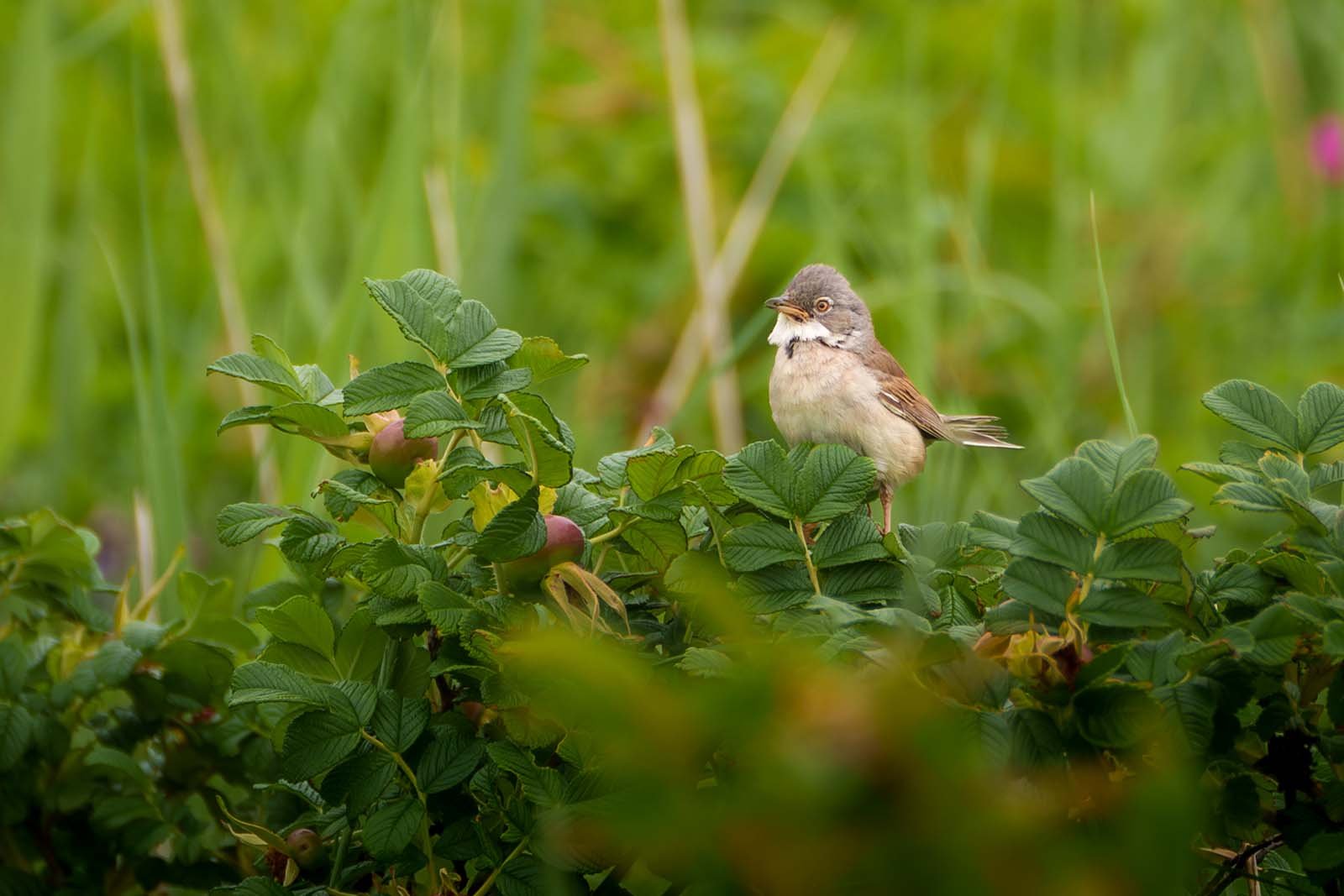Chinese bamboo partridge (Bambusicola thoracicus)
Chinese bamboo partridge (Bambusicola thoracicus) with reddish-brown breast plumage stands among dense green foliage on the forest floor.
Chinese Bamboo Partridge - Secretive, Loud, and Fascinating
The Chinese Bamboo Partridge (Bambusicola thoracicus) lives hidden yet vocal – discover everything about its appearance, behavior, habitat, and conservation status.
Shortlist
Ground-dwelling gamebird from East Asia
Master of camouflage with subtle plumage
Loud territorial calls despite secretive lifestyle
Stays in its home range year-round
Not endangered but dependent on dense vegetation
Scientific name: Bambusicola thoracicus
Size: approx. 27–31 cm
Weight: 200–350 g
Native range: Taiwan and South China
Introduced range: Widespread in Japan – Honshū, Shikoku, Kyūshū
Habitat: Bamboo forests, bushy forest edges, overgrown field margins
Diet: Seeds, berries, insects
Breeding season: April to July
Status: Not endangered, but locally dependent on habitat
Table of Contents
- Introduction
- Appearance – Camouflage in Detail
- Lifestyle – Ground-bound and Hidden
- Diet – Foraging at Ground Level
- Breeding – Early Start for Ground Runners
- Behavior – Loud Voice, Shy Nature
- Habitat Needs – Thriving Where It's Dense
- Field Encounters
- FAQ – Top 5 Questions
Introduction
You hear it before you ever see it—if you see it at all. The Chinese Bamboo Partridge leads a hidden life. Not in the treetops, but at ground level, concealed beneath bamboo and thickets. If you walk attentively through Japan’s forests, you may be lucky enough to detect this rarely visible but unmistakably vocal bird. Why is it so special? That’s what you’ll find out here.
Appearance – Camouflage in Detail
This bird isn’t out to impress with color. Its plumage is made for hiding: a blend of reddish, brownish, and beige tones, finely marked with spots and flecks.
Distinctive features – if you manage to spot them:
- Reddish coloring on head and throat
- Grayish eyebrow stripe – the namesake "grey-brow"
- Pale chest with fine speckling
- Sturdy legs for scratching
- Short, dark beak
At 27 to 31 centimeters long and weighing between 200 and 350 grams, it’s a medium-sized partridge – surprisingly agile despite its compact build.
Lifestyle – Ground-bound and Hidden
This partridge isn’t fond of flying. It prefers to stay on the ground, slipping through underbrush, avoiding detection. Originally native to Taiwan and South China, it is now naturalized in Japan, especially on Honshū, Shikoku, and Kyūshū.
Preferred environments:
- Bamboo thickets
- Forest edges with dense ground cover
- Bushy field margins and hedgerows
- Overgrown fallow land
One essential requirement: cover. It consistently avoids open areas.
Diet – Foraging at Ground Level
The Chinese Bamboo Partridge isn’t picky but does have ground-level preferences. It only eats what it can find on the ground, using classic gamebird tactics: scratching, pecking, crouching.
Daily menu includes:
- Seeds
- Berries
- Tender shoots
- Insects and larvae (especially during breeding)
This mix of plant and animal food ensures year-round nutrition—provided the forest floor offers enough.
Breeding – Early Start for Ground Runners
From April to July, it’s nesting season—but without much fuss. The nest is simply a shallow ground scrape, padded with plants and hidden among grass or shrubs.
Reproductive behavior:
- 4 to 7 eggs are laid
- Only the female incubates them
- Chicks leave the nest right after hatching
- They are precocial – ready to walk and forage from day one
This strategy minimizes predation risk and promotes early independence—ideal for ground life.
Behavior – Loud Voice, Shy Nature
The Chinese Bamboo Partridge stays close to home. It is a resident species, meaning it remains in the same territory all year. In colder months, it retreats deeper into cover, becoming even harder to spot.
But one thing gives it away: its call.
Notable traits:
- Loud, three-syllable calls like “gi-ge-roi” or “si-mu-kuai”
- Most vocal at dawn and dusk
- Flushes in short bursts when startled, then disappears
Its song is a clear signature – audible even when the bird itself is invisible.
Habitat Needs – Thriving Where It's Dense
While the Chinese Bamboo Partridge is currently not endangered in Japan, that doesn’t mean it's safe everywhere. It is highly reliant on specific types of dense habitat—and those are under threat.
Current risks include:
- Bamboo clearance
- Loss of shrubs and ground vegetation
- Expanding agriculture with no refuge zones
Where thickets remain intact, populations stay stable. But once the underbrush goes, the partridge soon follows.
Field Encounters
Early morning, quiet woods, a fluting whistle
You’re walking through a wooded trail at dawn. Suddenly, you hear a clear, two-note call—loud and startling, deep in the brush. You see nothing. But now you know: a Chinese Bamboo Partridge is nearby.
Rustling leaves and short bursts of wings
You approach a shrubby field edge. Out of nowhere, a stocky bird flutters upward, flies a few meters, and dives back into cover. The plumage flashes reddish and gray. Most likely: a partridge.
Scratched leaf litter and three-toed prints
A patch of forest floor shows signs of scratching. Next to it: small footprints with three forward toes. No bird in sight—but the signs are unmistakable.
FAQ – Top 5 Questions
1. Where does the Chinese Bamboo Partridge live today?
In Japan—especially on Honshū, Shikoku, and Kyūshū. Its native range is Taiwan and South China.
2. When is the best time to hear it?
At dawn and dusk. These are the peak calling hours—even in winter.
3. What does its plumage look like?
A mix of reddish, gray, and beige tones, covered in fine speckles. Perfect camouflage.
4. What do the chicks eat?
From day one, they forage for themselves—mainly insects, worms, and tender plant material.
5. Is it endangered?
No, but it's vulnerable to habitat loss. It depends on dense vegetation to survive and reproduce.





















